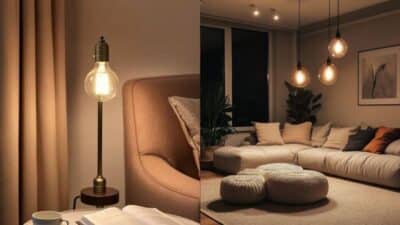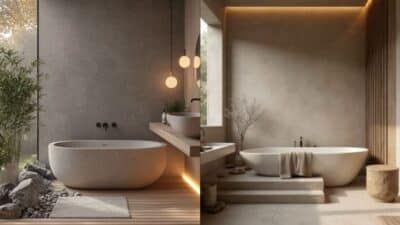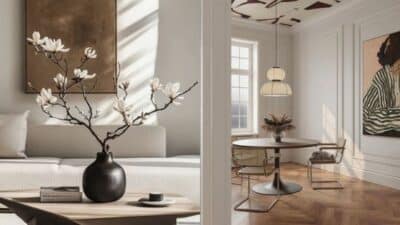An entryway is the first thing guests see when they enter a home, so styling it well makes a big impact. It should be both welcoming and practical, offering a space to store coats, shoes, and keys while showing off personal style.
Simple touches like a stylish coat rack, a small bench, or good lighting can transform the entryway into a warm and functional spot. Whether the space is large or small, adding smart storage and decor creates a neat area that feels inviting from the moment anyone walks in.
By blending form with function, the entryway becomes more than just a passage—it sets the tone for the whole home and makes everyday life easier. Lots of ideas exist to fit any style or space, so there’s always room for creativity and comfort.
Essential Elements of a Stylish Entryway
A stylish entryway balances looks and function. It must welcome guests while keeping everyday items organized and easy to find. Key details include the right furniture, smart storage, and good lighting to brighten the area.
Choosing Entryway Furniture
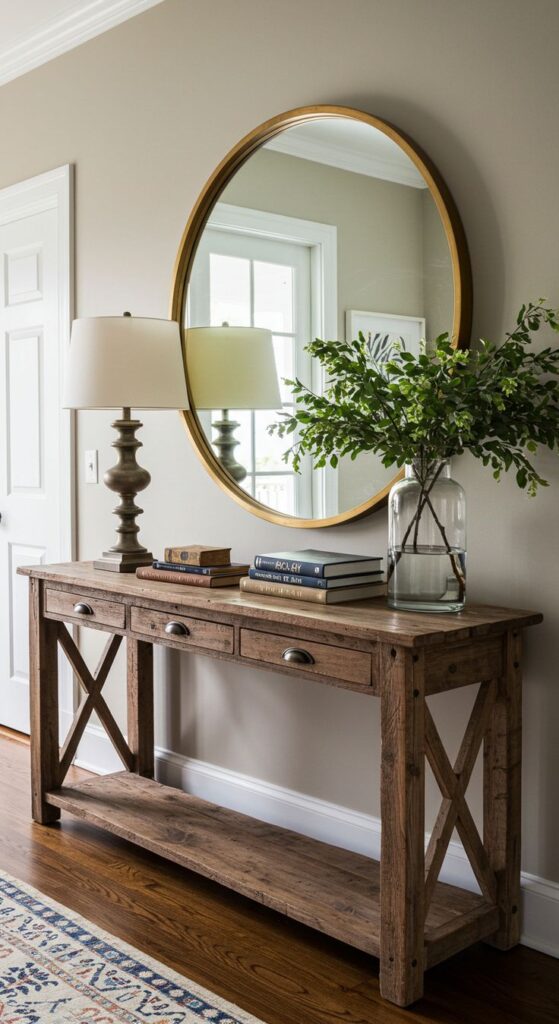
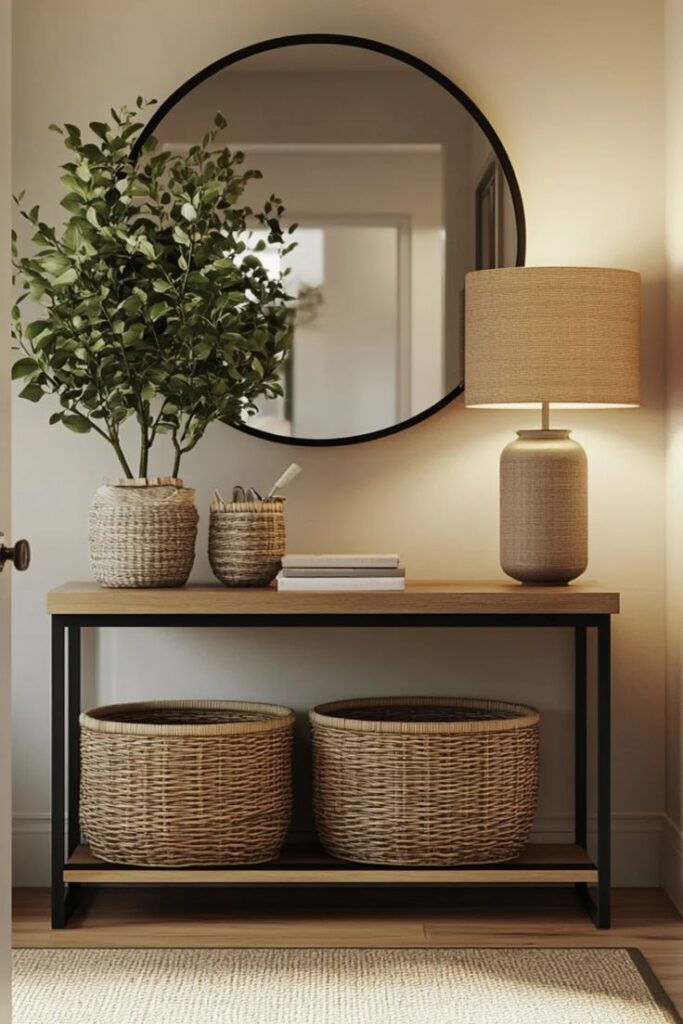
Entryway furniture needs to fit both the space and the homeowner’s lifestyle. Small benches or stools offer places to sit while putting on shoes. Console tables are perfect for dropping keys and mail.
When picking furniture, size matters. Pieces should not block the path but still provide usefulness. Materials like wood or metal add style and durability. Mirrors above furniture can open up space and let in more light. A mix of comfort and practicality makes the entryway inviting and easy to use.
Functional Storage Solutions
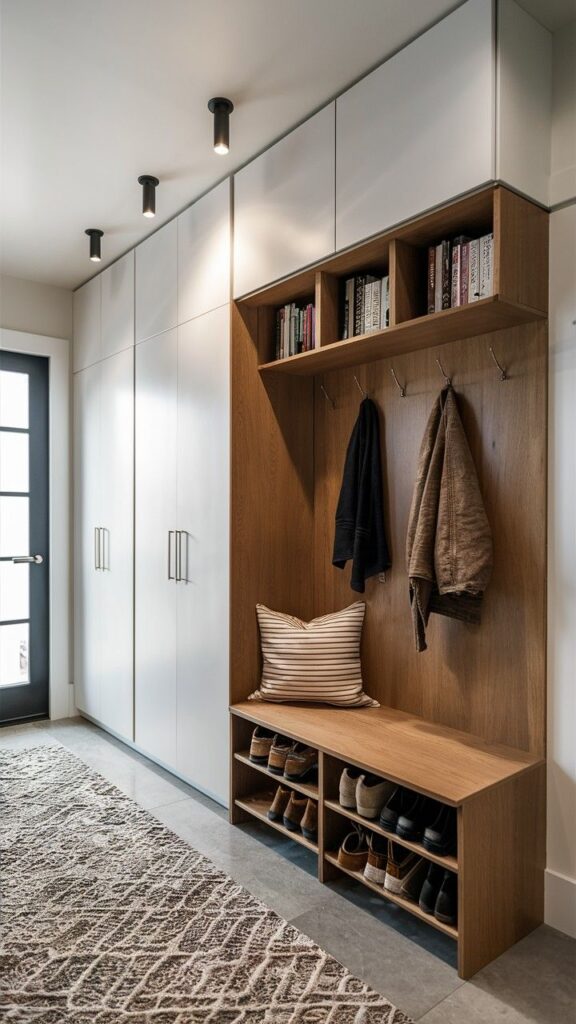
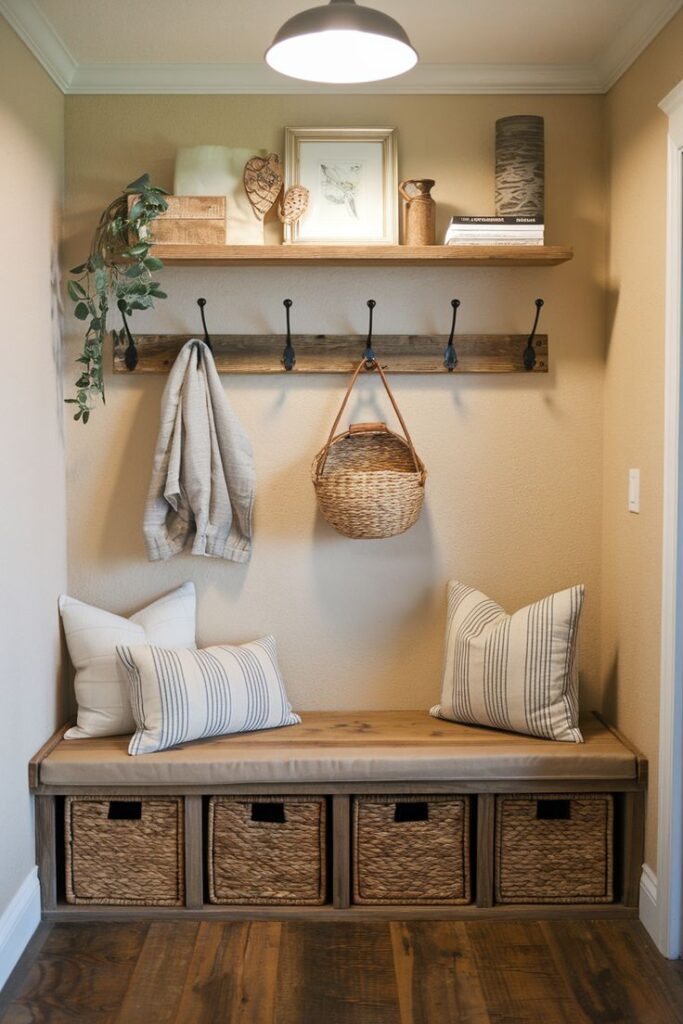
Good storage keeps the entryway tidy and stress-free. Common items like coats, shoes, and bags need a home. Wall hooks or coat racks help store jackets without cluttering floors. Baskets or bins under benches stow away shoes and smaller items.
Open storage invites mess, so closed cabinets can hide clutter. A coat tree or cubbies with labels add order. To maximize space, use vertical options like shelves or hooks. The right blend of open and closed storage helps everyone drop off or pick up their things quickly.
Entryway Lighting Ideas
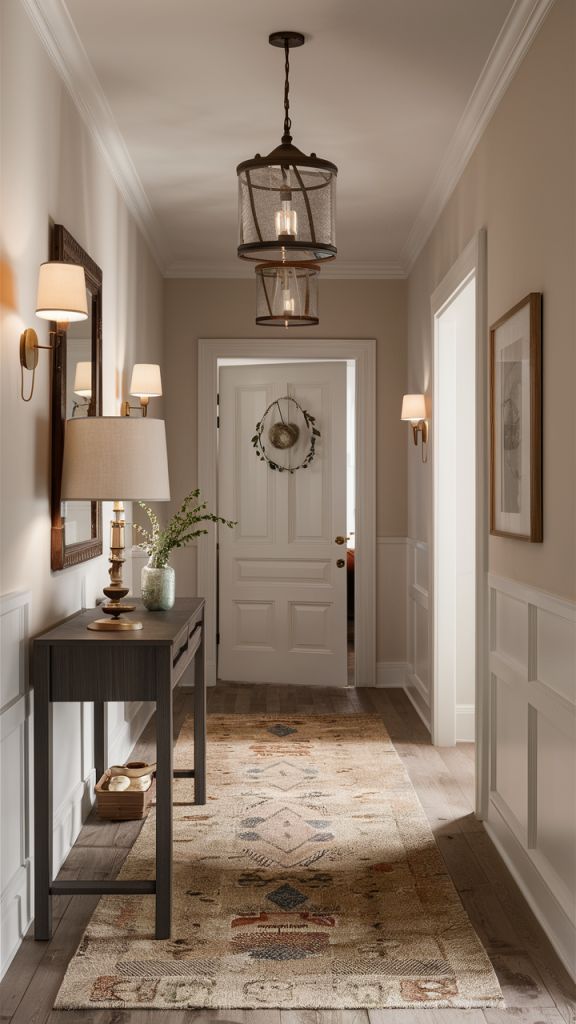
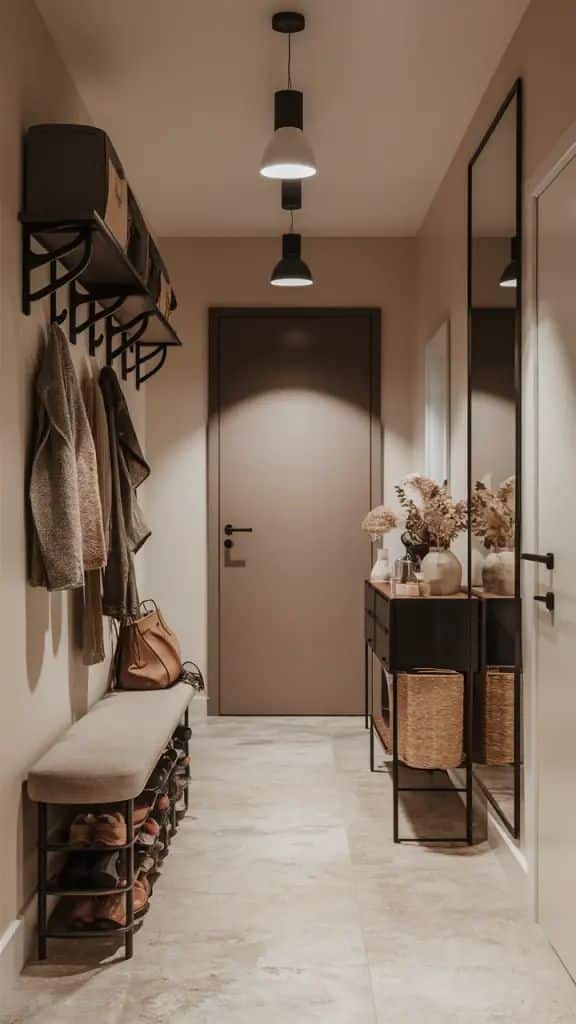
Lighting sets the mood and improves safety at the home’s entrance. Layered lighting works best. A ceiling light brightens the whole room, while wall sconces add warmth and style. Adding a lamp on a console table creates a welcoming glow.
Natural light is a plus if the entryway has windows or glass doors. Mirrors help reflect light to make the space brighter. Choosing bulbs with soft, warm tones creates a cozy feel without harsh glare. Proper lighting makes the entryway both practical and attractive.
Color Schemes and Materials for Home Entryways
Choosing the right colors and materials can make an entryway feel welcoming and stylish. Bold or neutral tones, durable flooring, and interesting wall finishes all combine to create a lasting first impression. These choices should reflect the home’s style while being practical for daily use.
Popular Entryway Color Palettes
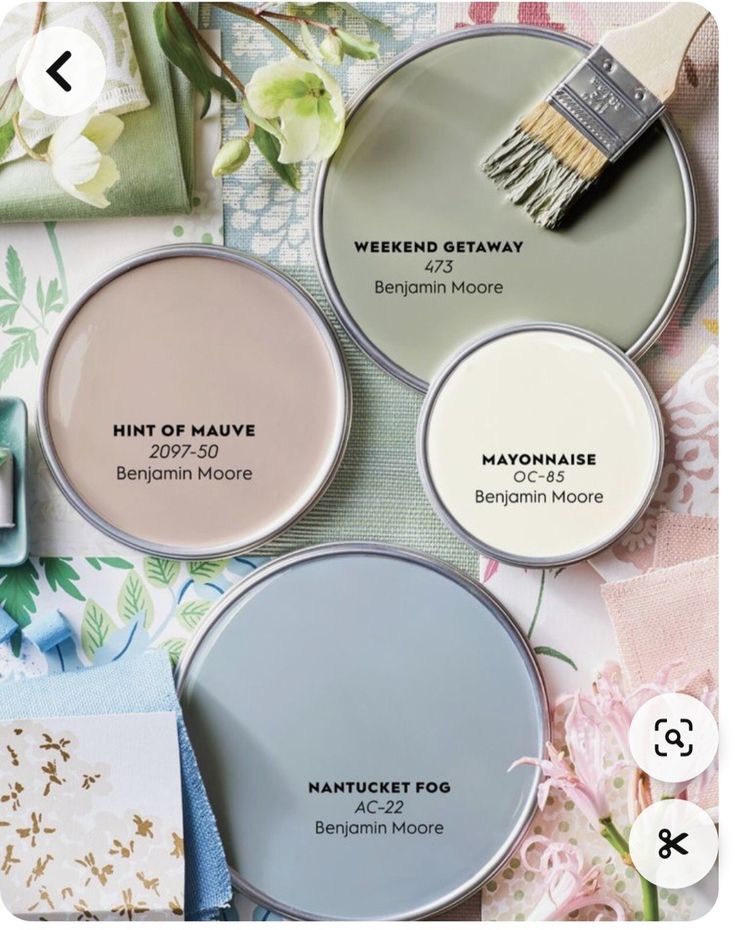
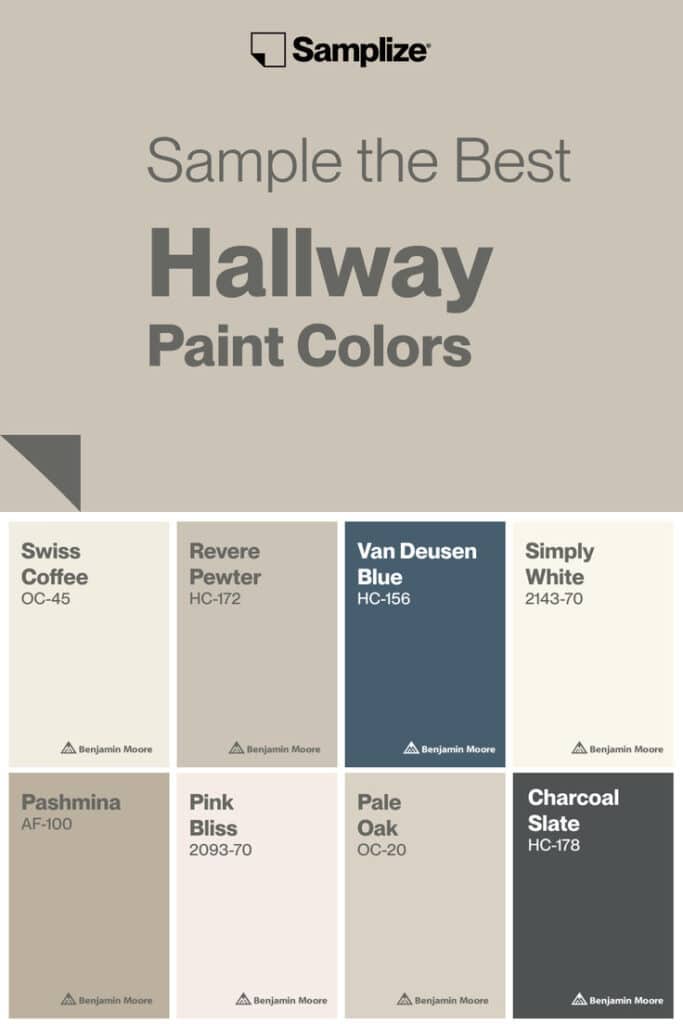
Entryways often use colors that balance warmth and style. Neutral shades like soft beige, gray, and off-white create a calm, timeless look. These make spaces feel open and work well with most decor styles.
For a bold statement, rich colors such as deep navy, emerald green, or burnt orange add character and depth. These shades catch the eye and add energy without overwhelming small spaces.
Pastels like pale blue or blush pink are gentle and inviting. They bring softness to busy hallways and highlight natural light.
A good tip is to consider natural light. Darker colors work best in well-lit entryways, while lighter tones brighten dim spaces.
Best Flooring Options
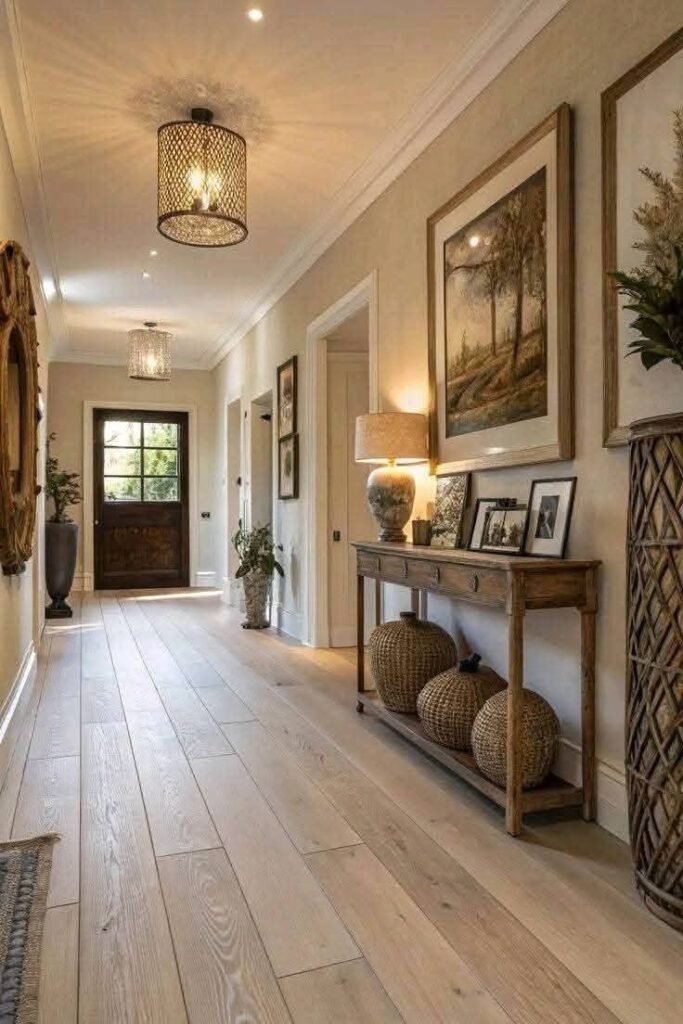
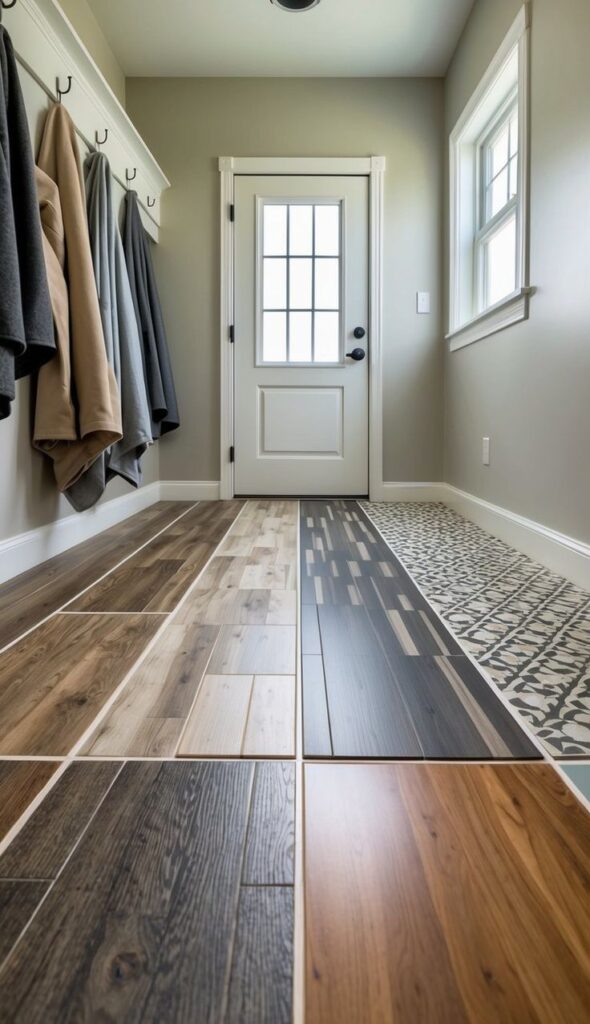
Flooring in entryways must be tough and easy to clean since these areas see heavy foot traffic. Popular materials include:
- Tile: Porcelain and ceramic tiles are water-resistant and come in many designs. They handle dirt well and are easy to mop.
- Hardwood: Offers warmth and style but needs a durable finish to protect against scratches and moisture.
- Vinyl: Affordable and very durable, vinyl comes in many patterns that mimic wood, stone, or tile.
Rugs can soften hard floors and trap dirt, but should have non-slip backing to prevent accidents. Materials like coir or indoor-outdoor rugs resist wear and help keep floors clean.
Wall Finishes and Treatments
Walls give character to the entryway and can handle some wear and tear if chosen wisely. Paint is the most common option, offering flexibility with color choices.
Using semi-gloss or satin paint finishes helps the walls resist scuffs and makes cleaning easier. Textured wallpapers or washable wall panels add subtle interest and hide marks well.
Another idea is wainscoting or beadboard on the lower half of walls. It protects from bumps and gives a classic look. Wood or tile accents can highlight the space and tie the entryway with the home’s style.
Decor Accents to Elevate Your Entryway
Adding the right decor accents can make an entryway more stylish and inviting. Choosing pieces like mirrors, art, and rugs that match the home’s personality helps create a lasting impression. These elements bring character and make the space feel complete.
Statement Mirrors
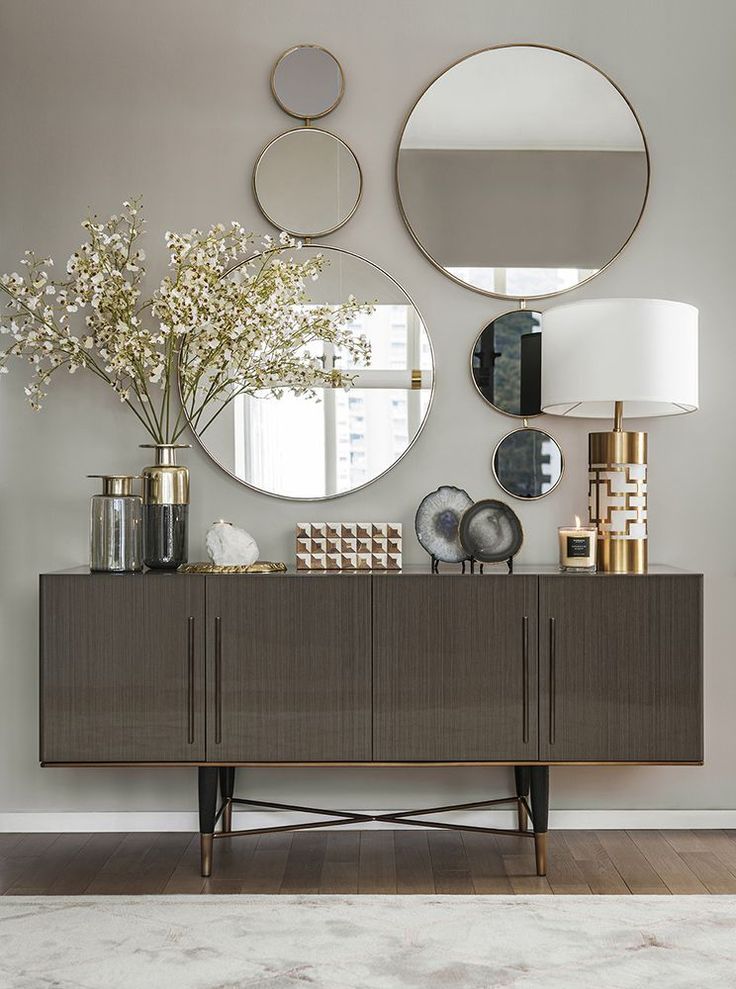
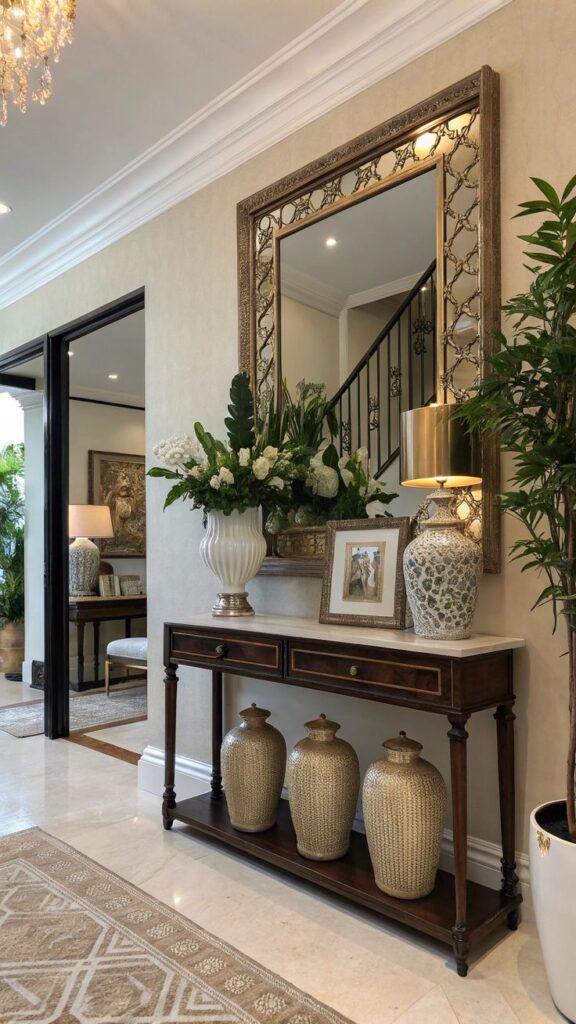
A large, eye-catching mirror is both practical and decorative in an entryway. It reflects light, making the area look brighter and bigger.
Choosing a mirror with a unique frame, such as metal, wood, or an unusual shape, adds interest. Round or sunburst mirrors work well to soften sharp angles in the space.
Placing a mirror above a console table or near the door ensures it is easy to use for last-minute checks. It also adds depth, making small entryways feel more open.
Art and Wall Displays
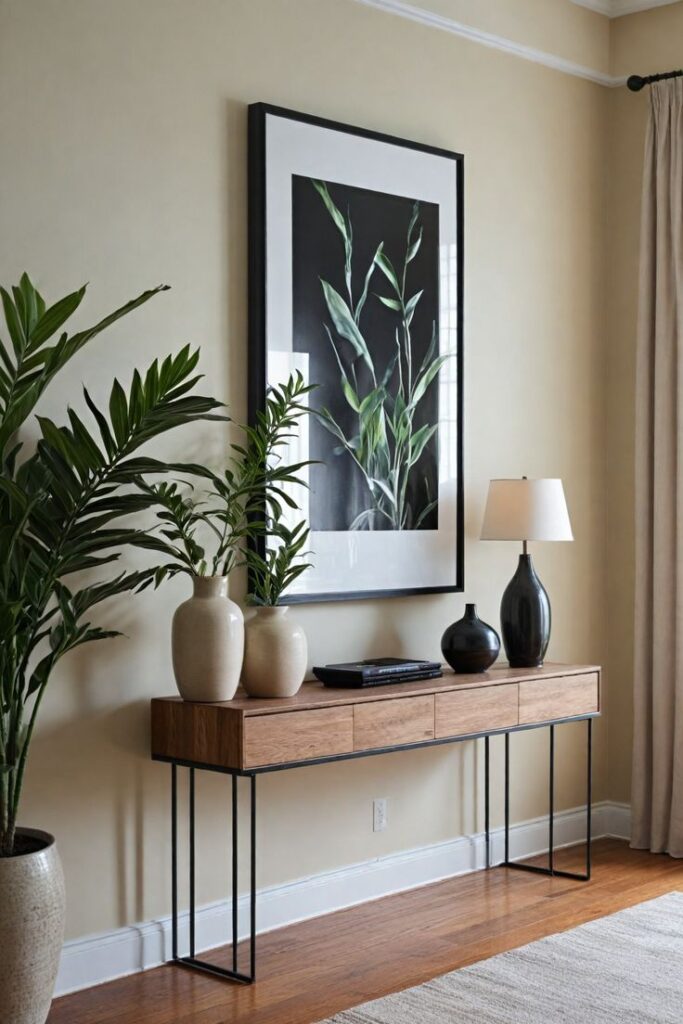
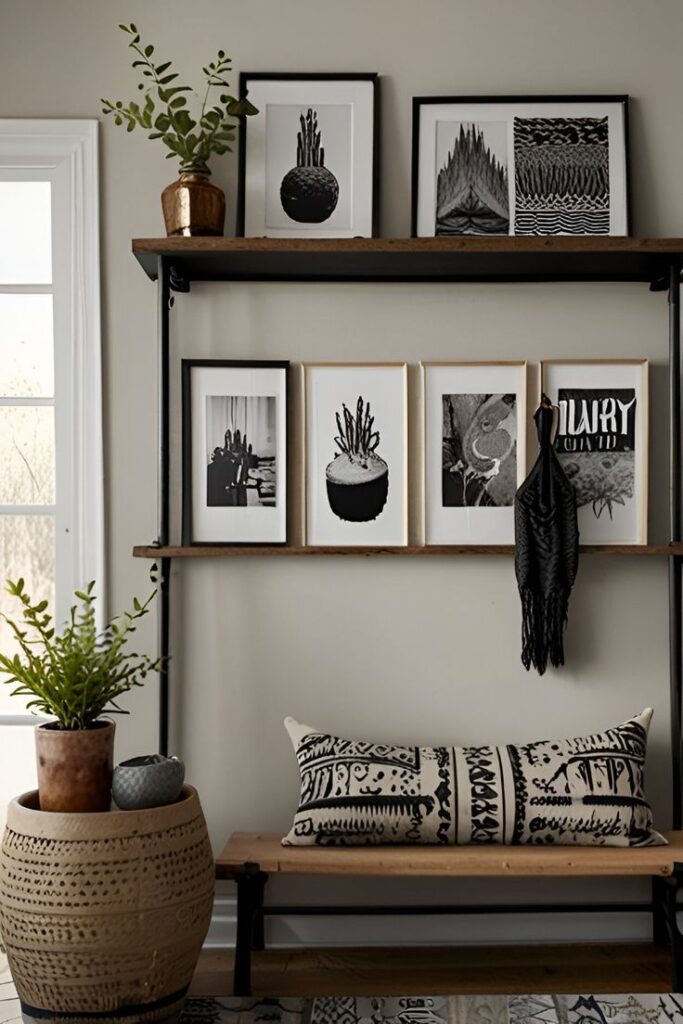
Adding art or a wall display improves the personality of the entryway. It can be a single bold painting or a gallery wall of framed photos or prints.
Choosing artwork that matches the home’s style and color palette ties the space together. For example, modern art suits a sleek home, while landscapes work well in rustic or cozy styles.
Wall shelves with decorative items or hooks for keys also contribute to both style and function. The key is to keep the area balanced to avoid clutter.
Rugs and Runners
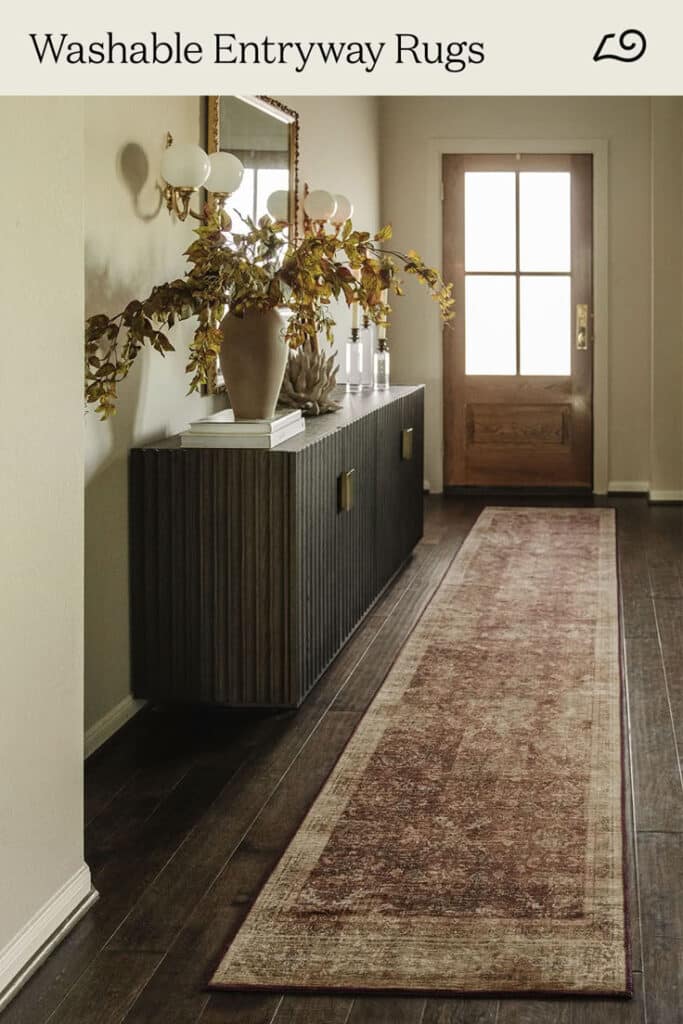
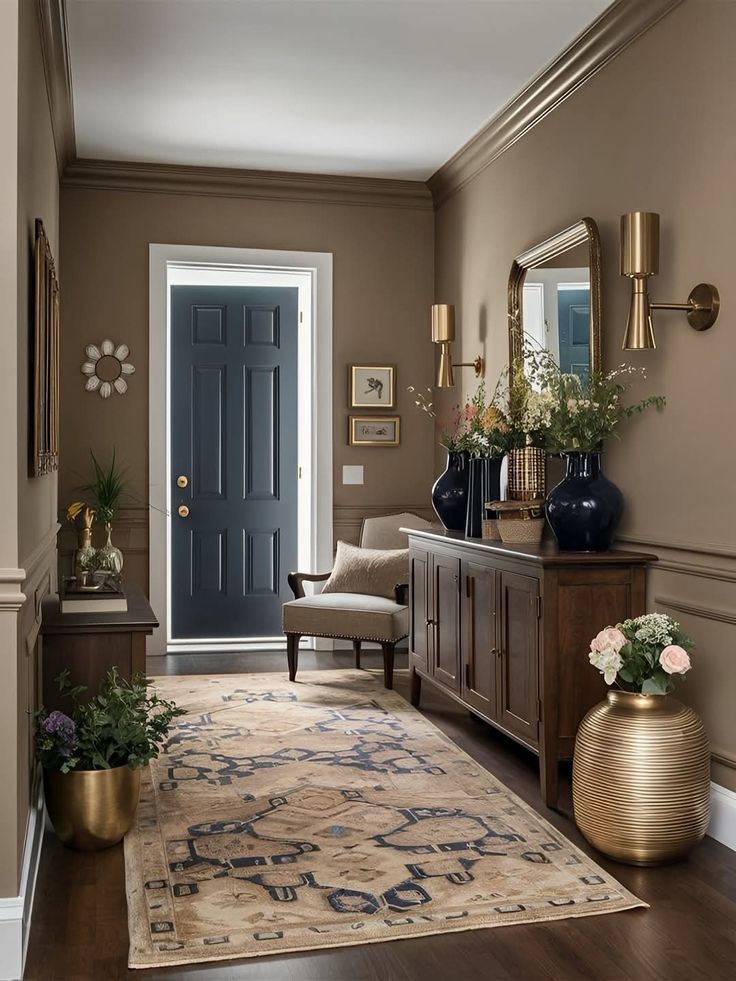
Rugs and runners add warmth and texture to an entryway while protecting the floor. Choosing durable, easy-to-clean materials is important in high-traffic zones.
A patterned rug can introduce color and personality, while a neutral one adds softness without overwhelming the space. Measuring the entryway properly ensures the rug is the right size—usually covering the main walking path without blocking doors.
Layering a small rug over a larger one can create visual interest. Non-slip pads underneath prevent slipping and keep rugs in place for safety.
Seasonal and Thematic Entryway Styling
A well-styled entryway changes with the seasons and special occasions. This keeps the space fresh and interesting without a full redesign. Small updates like swapping colors, adding themed decor, or personal items can transform the entryway’s look instantly.
Seasonal Decor Switch-Ups
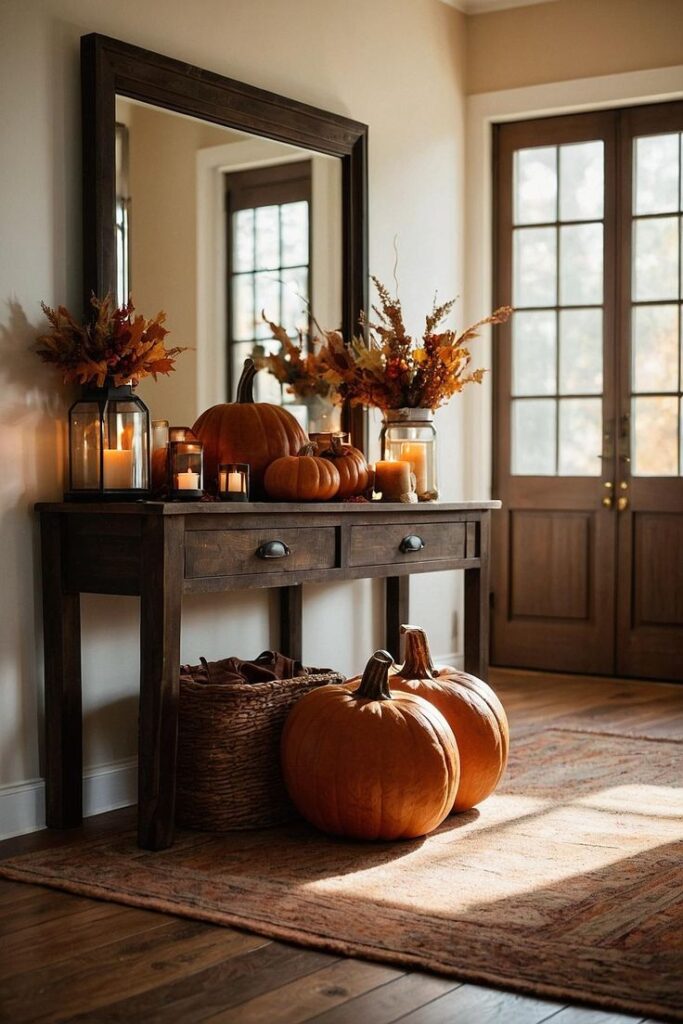
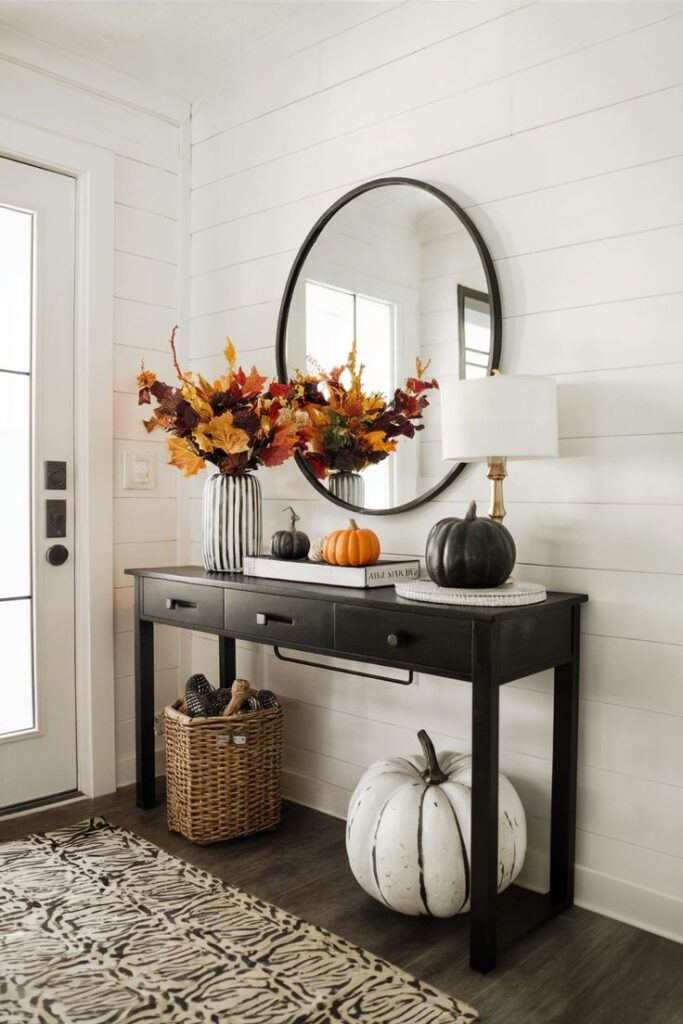
Changing entryway decor based on the season helps match the mood outside. In spring, light colors and fresh flowers bring brightness. Summer can include beach-inspired pieces or green plants.
Fall invites warm tones like rust, burgundy, and gold. Natural items such as pinecones or dried leaves add texture. Winter decor often uses cozy textiles, evergreen branches, or simple lights.
Switching a few key items, like rugs, pillows, or wall art, makes the update easy. This keeps the entryway welcoming year-round without clutter.
Themed Entryway Styles
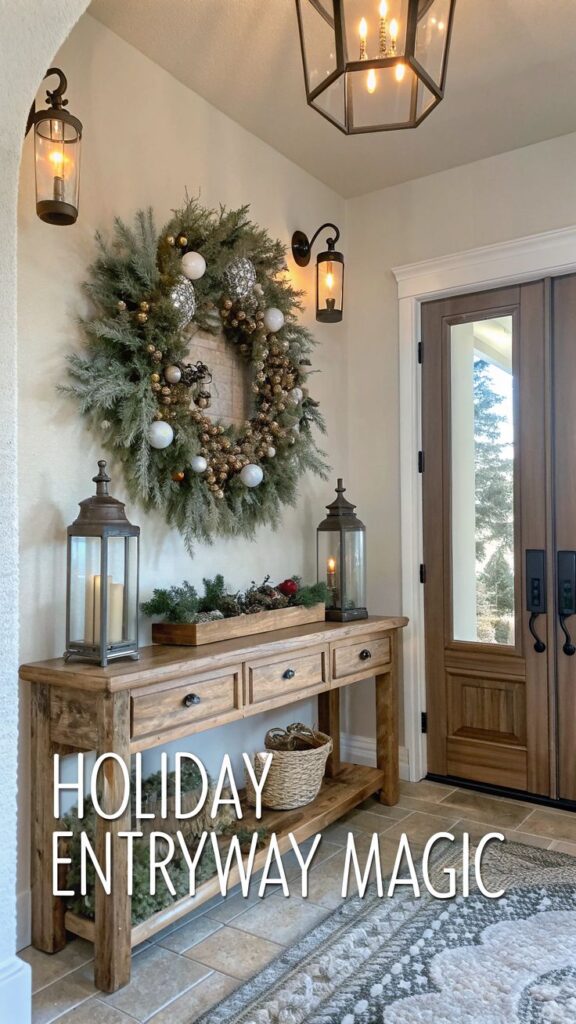
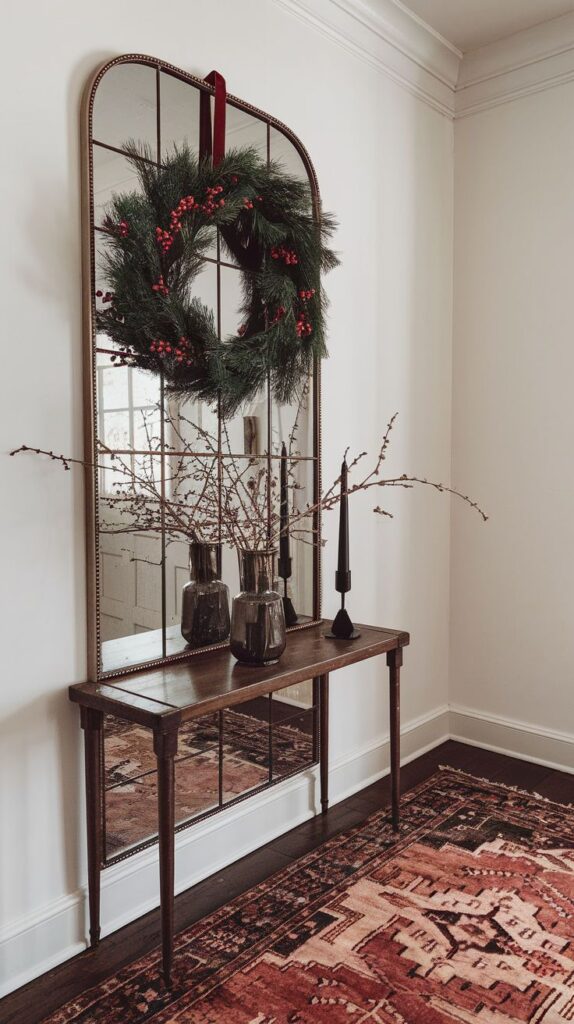
Themed entryways create a specific vibe for holidays or personal tastes. For example, a rustic style could include woven baskets, wooden accents, and metal lanterns.
Holiday themes like Halloween or Christmas can be subtle or bold. One idea is a neutral palette with seasonal elements like pumpkins or ornaments.
Themes should balance style with function. Seating for shoes, storage baskets, and durable materials ensure the space remains practical while looking great.
Personalized Touches
Adding personal elements makes an entryway feel unique. Family photos, custom signs, or favorite artwork highlight personality.
They can also include handmade crafts or gifts. These add warmth and create conversation points for visitors.
Even a small display of personal items changes the look from generic to inviting. Choosing meaningful decor keeps the space feeling welcoming every day.
Small Space Entryway Styling Ideas
Small entryways can still be both stylish and functional. Using vertical space efficiently and choosing the right furniture are key to making a tiny area feel open and organized.
Maximizing Vertical Space
Using walls for storage is a smart way to save floor space. Hooks and pegboards allow easy access to coats, bags, and keys without cluttering the floor. Shelves placed higher can store less-used items or decor, drawing the eye upward and creating a sense of height.
Mirrors on walls can make the area feel bigger and brighter by reflecting light. Vertical storage racks or slim cabinets fit well in narrow spots without taking much ground space. It’s also helpful to use wall-mounted baskets or cubbies to keep shoes and smaller items tidy.
Compact Furniture Choices
Choosing small-scale or multipurpose furniture helps fit everything needed without overcrowding. Slim benches that double as storage hold shoes or seasonal items. Narrow console tables provide a surface for mail or decor but don’t take up much width.
Foldable or stackable stools are great for occasional seating without permanent space use. Pieces with open legs or clear materials can make the entryway feel less heavy. When picking furniture, keeping it proportional to the size of the space is important to avoid making the area feel cramped.
- 115shares
- Facebook0
- Pinterest115
- Twitter0
